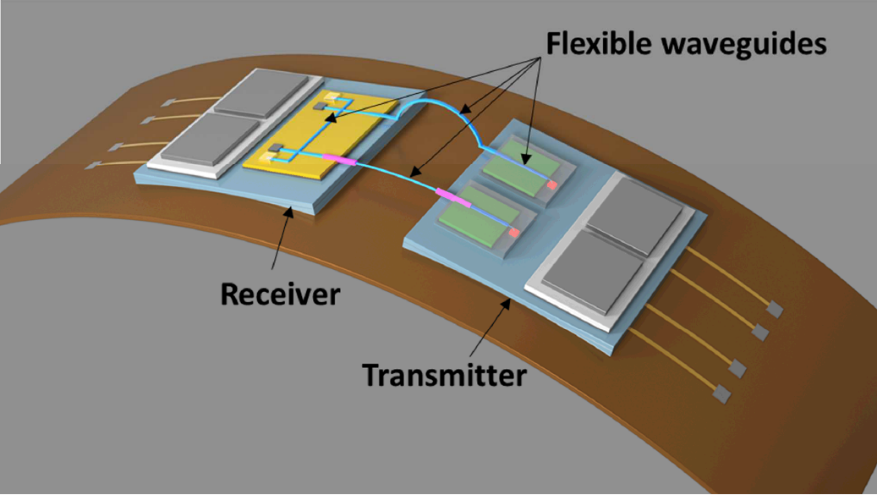Commercial fiber optic cables are the current standard for carrying optical signals in industries like communications or medical devices. However, the fibers are made of glass, which do not have favorable characteristics for applications that require flexibility and re-routing, e.g. typically brittle, limited selection of materials, dimension constraints. Recently available LED-based optical solutions are more compact and flexible; however, they tend to have low power conversion efficiencies, high operating current, but more detrimentally, the diodes generate excess heat, which may not be acceptable for applications such as medical devices. Therefore, there is an unmet need for improved optical fibers that address the shortcomings of both the current standard commercial fiber optic cables as well as the newer LED based optical solutions.
Commercial fiber optic cables are the current standard for carrying optical signals in industries like communications or medical devices. However, the fibers are made of glass, which do not have favorable characteristics for applications that require flexibility and re-routing, e.g. typically brittle, limited selection of materials, dimension constraints. Recently available LED-based optical solutions are more compact and flexible; however, they tend to have low power conversion efficiencies, high operating current, but more detrimentally, the diodes generate excess heat, which may not be acceptable for applications such as medical devices. Therefore, there is an unmet need for improved optical fibers that address the shortcomings of both the current standard commercial fiber optic cables as well as the newer LED based optical solutions.
- The novel methods in this invention are able to produce flexible optical fibers/waveguides that are bendable with thin cladding. These flexible fiber elements are more robust compared to commercially available optical fibers that are made of fragile glass, which can be easily damaged and have larger diameters due to thick cladding.
- The current alternative to optical fibers is optical diodes, but since the diodes are located at the site of operation, the heat they generate could potentially damage the surrounding materials and tissue. Flexible fiber optics can be a solution to this problem by allowing the light source to be located away from the site.
- Flexible waveguides can be made from nm to mm scale.
- Methods are modular and can be used in combination with other microfabrication techniques to develop a comprehensive approach for the design of integrated optoelectronic systems that require flexible and customized fiber optic solutions.
- multielectrode arrays (MEAs)
- implantable optoelectronic devices such as cochlear implants
- medical monitoring devices such as endoscopes
Publications and video
LLNL develops optical capability for thin-film neural implants to look into brain activity (https://www.llnl.gov/news/llnl-develops-optical-capability-thin-film-neural-implants-look-brain-activity)
Kampasi K, Ladner I, Zhou J, Soto AC, Hernandez J, Patra S, Haque RU. POEMS (POLYMERIC OPTO-ELECTRO-MECHANICAL SYSTEMS) FOR ADVANCED NEURAL INTERFACES. Mater Lett. 2021 (https://doi.org/10.1016/j.matlet.2020.129015)
Current stage of technology development: TRL-2
LLNL has filed for patent protection on this invention.
U.S. Patent Application Publication No. 2022/035558 HIGH RESOLUTION AND HIGH FLEXIBILITY FIBER OPTICAL CABLES AND MICROFABRICATION METHODS FOR MAKING SAME published 11/10/2022 (https://image-ppubs.uspto.gov/dirsearch-public/print/downloadPdf/20220355558)



